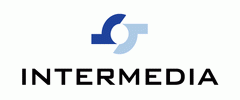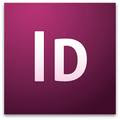 After researching, I found that there were a lot of magazines that used different conventions. I wanted to challenge my audience by pushing the boundaries of the R & B genre. I did this by using my research knowledge to make my magazine unique. I made it so that my central image didn’t overlap the masthead like in most of the R & B; I thought that I would be different and place it underneath my masthead so that you can see the full potential of what the masthead has. I also used the colour blue as my background which is usually used in pop magazines where in R & B it’s usually white for the background. I feel that my cover stands out above all other magazines is because it is unique to the genre and has a lot of my own favourite things on it. It has changed from the original as I feel that now it looks more professional. In the contents pages of all the other R & B magazines, all the subheadings are all spread out were as on my magazine they are in one column neatly aligned. I feel this makes my contents page unique because other magazines do not do this. Other magazines contents pages don’t use their masthead in the way I have by splitting it up. My double page article is very different to others as I have used a question and answer based interview and used my images to give the effect of them walking away from each other.
After researching, I found that there were a lot of magazines that used different conventions. I wanted to challenge my audience by pushing the boundaries of the R & B genre. I did this by using my research knowledge to make my magazine unique. I made it so that my central image didn’t overlap the masthead like in most of the R & B; I thought that I would be different and place it underneath my masthead so that you can see the full potential of what the masthead has. I also used the colour blue as my background which is usually used in pop magazines where in R & B it’s usually white for the background. I feel that my cover stands out above all other magazines is because it is unique to the genre and has a lot of my own favourite things on it. It has changed from the original as I feel that now it looks more professional. In the contents pages of all the other R & B magazines, all the subheadings are all spread out were as on my magazine they are in one column neatly aligned. I feel this makes my contents page unique because other magazines do not do this. Other magazines contents pages don’t use their masthead in the way I have by splitting it up. My double page article is very different to others as I have used a question and answer based interview and used my images to give the effect of them walking away from each other.
The masthead was chosen in the type set it was because I felt it suited the magazine cover well and because it sort of relates to the name of the magazine by the drop shadow which spreads from behind of the original text creating a stormy effect. I found that on most R & B magazines the type set was either in a graffiti style or just plain bold writing so I thought I would carry on to challenge the magazines conventions and add in a drop shadow. The typography of the copy on most R & B magazines is simple and easy to read so I thought that I would use this as an advantage to make it more professional. Throughout my magazine I tried to maintain the level of professionalism as best as I could.
My magazine presents a social group from my moodboard I created. Lots if R & b magazines are scattered and presented on the board so you can easily compare the different conventions each of the magazines use. I skimmed and scanned these magazines to look for techniques in which I could then use in my magazine. I chose my colours for my target audience as it is aimed at teenagers/ young adults therefore it has to be extremely eye catching and appealing to the audience. This magazine would stand out to teenagers/ young adults because it has gossip about the big artists and contains information they may be interested in. My three texts which I produced were made to suit the target audience so they would actually read the magazine.
The producers and distributors that might publish my magazine would be The InterMedia Partners Group which publishes the magazine ‘VIBE’ where my inspiration came from. The reason the company would be interested in my magazine is because it is R & B and contains all the basic conventions of their magazines but has unique twists to it. I do believe that any company that is looking for a different tyoe of genre to introduce into their publishing would be interested in my magazine because they may want expand their variety of genres they publish and then it would be a big promotion for the company as well as the magazine. This would also give us a wider range of a target audience.
To retrieve information from my chosen target audience, I produced a questionnaire for them to fill in. I did this so that I could get some feedback on what my target audience actually feel like about my magazine. My results from the questionnaires show that the majority of my target audience would buy my magazine if it was in a shop on sale.
Throughout the course of producing my three texts, I have learnt many skills. For example, learning how to edit photos in Adobe Photoshop CS3. I used many techniques like cropping, changing the contrast of the images etc. I also learnt how to put the different images things id produced into layers on Adobe Indesign CS3 so that my magazine didn’t look unprofessional. To make it easier for me to import my images into indesign I used Adobe Bridge CS3 so that I could import them all at once in the frames that I wanted them to be in.
Looking back at my preliminary task, I have learnt many new skills and techniques. When I did my preliminary task I only knew the basics of how to use Adobe Photoshop CS3 but as the course progressed I got more technical with Adobe Photoshop CS3 and then I was introduced to Adobe Indesign CS3 and Adobe Bridge CS3. By my final piece I was very familiar with a lot of the different buttons on each of the packages I used and therefore gained some knowledge for future references. If I hadn’t been introduced to any of the packages then my magazine wouldn’t have looked in the slightest bit professional.
 |
| Adobe Photoshop CS3 |
This is a copy of my questionnaire.
1. Are you Male or Female?
[ ] Male [ ] Female
2. What age group do you fall into?
[ ] 11-16 [ ] 17-21 [ ] 22-30 [ ] 31-40 [ ] 40+
3. How often do you read magazines?
[ ] All the time [ ] Sometimes [ ] Never
4. Which type of magazine do you prefer in music?
[ ] Metal [ ] Indie [ ] R&B [ ] Pop [ ] Rock [ ] Other (please state)
…………………………………………………………………………..
5. Do you read magazines A) Thoroughly B) Skim and Scan them OR C) Look for the parts that interest you?
[ ] A [ ] B [ ] C
6. What features of a magazine attract you the most?
………………………………………………………………………………
7. Did the cover reflect the content of the magazine? ( please state your answer and why)
…………………………………………………………………………………………………………………………………………..
8. If you saw this magazine in the shops, would you buy it?
[ ] Yes [ ] No (please state why)
…………………………………………………………………………………………………………………..
9. Was the contents page easy to understand?
[ ] Yes [ ] No
10. Is this a magazine for you?
[ ] Yes [ ] No (please state why)
…………………………………………………………………………………………………………………………………..
 This is my final design for my contents page of my school magazine. It consists of a bright colour on a dull background so the copy stands out so the audience can be drawn in to it easily. I decided to change the type set of the copy because it wouldn't have been clear enough to read and I felt it suited style of the magazine.
This is my final design for my contents page of my school magazine. It consists of a bright colour on a dull background so the copy stands out so the audience can be drawn in to it easily. I decided to change the type set of the copy because it wouldn't have been clear enough to read and I felt it suited style of the magazine. 


































